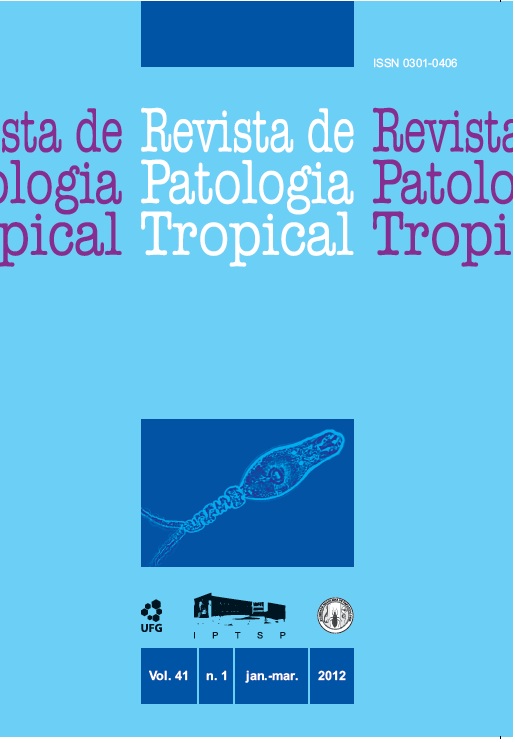The influence of population density and food intake on the reproductive biology of Biomphalaria glabrata (Mollusca) and calcium proportion in snails experimentally infected with Schistosoma mansoni (Trematoda)
DOI:
https://doi.org/10.5216/rpt.v41i1.17798Keywords:
Biomphalaria glabrata, Schistosoma mansoni, Survival rate, Egg-laying rate, Cercarial sheddingAbstract
The aim of this study was to evaluate the influence of population density and food intake on the survival and reproduction of uninfected Biomphalaria glabrata and the effect of calcium carbonate availability on cercarial emergence from experimentally infected snails, to define conditions to maximize snails’ breeding and cercarial production for future studies about this model. The results observed in this study indicate that increased population density has a negative effect on the survivaland reproductive activity of B. glabrata. In addition, the quantity of lettuce offered to the snails altered the number of eggs laid per snail. There was a significant relation between the amount of lettuce eaten per day and the number of eggs produced per snail, as well as the number of egg masses per snail, and eggs per egg mass. Furthermore, the snail’s survival was directly associated with the amount of calcium carbonate and the cercarial emergence was inversely related to the calcium carbonate amount. This study might help to understand the influence of population density and food intake on the reproductive biology of captive snail populations. In relation to cercarial emergence, calcium supplies must not be provided to Schistosoma mansoni-infected snails while maintaining S. mansoni under laboratory conditions because it decreases cercarial emergence.
Downloads
Downloads
How to Cite
Issue
Section
License
The manuscript submission must be accompanied by a letter signed by all authors stating the full name and email address, confirming that the material has not been published or is under consideration for publication elsewhere, and agreeing to transfer copyright in all media and formats for Journal of Tropical Pathology. The authors will not be paid for published articles. They are solely responsible for the content of those articles, even if the Editor holds the right to adjust them to the norms of the journal.
The reviewers will not be paid for the peer review process.

